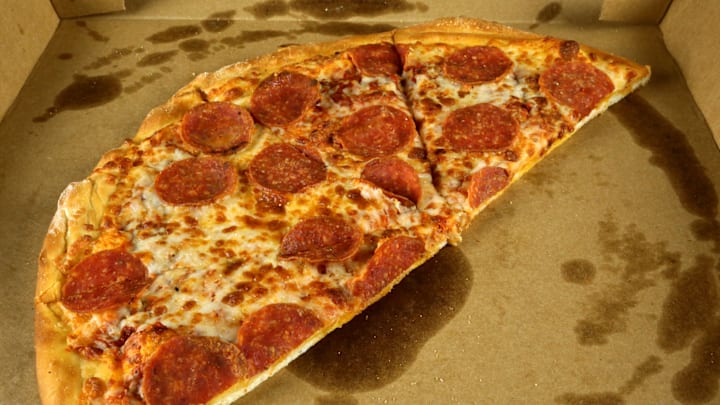Food preferences vary, but pizza seems to be the one thing most everyone can agree on: Americans eat up to 23 pounds of pizza each year.
Another near-universal truth: Cold pizza is as good, or possibly better, than hot pizza. And the molecular structure of the food offers an explanation as to why.
Speaking with the BBC in 2000, chemistry lecturer Dr. Maureen Cooper of Stirling University in Scotland observed that pizza’s distinct layers—dough, tomato sauce, and cheese—remain largely separated after being refrigerated. This prevents water from the sauce making the bread soggy, and also prevents fat and oil from the cheese—which congeals—from soaking into the bread. The water in the tomato sauce essentially acts as a dam for the oil. (Oil and water, naturally, don’t mix.)

The other reason cold pizza thrives has to do with aromatics like garlic, herbs, and onions. A fresh pizza tends to present these flavors as separate, which can lend a hot pizza a more tangy or biting flavor. After it’s cooled off, those flavors tend to settle down and blend together, complementing one another.
If you want to pass up hot pizza entirely, you probably won’t find anyone willing to deliver a cold pie—at least, not on purpose—but there are some other workarounds. At Beto’s Pizza in Pittsburgh, customers can order a warm crust with cold, shredded provolone on top. It’s developed a cult following, with thousands of rave reviews on Google.
[h/t Mashed]
